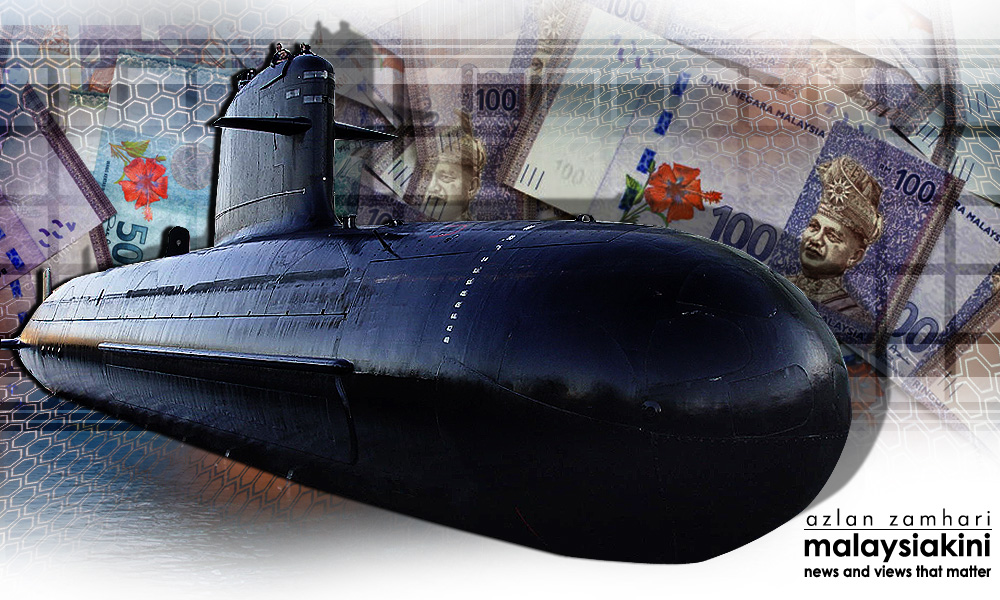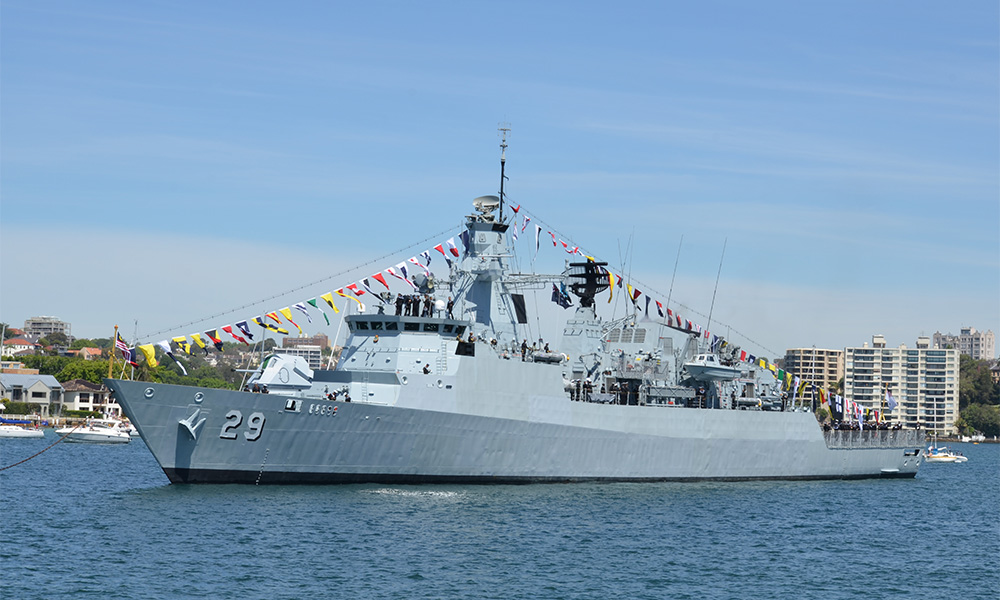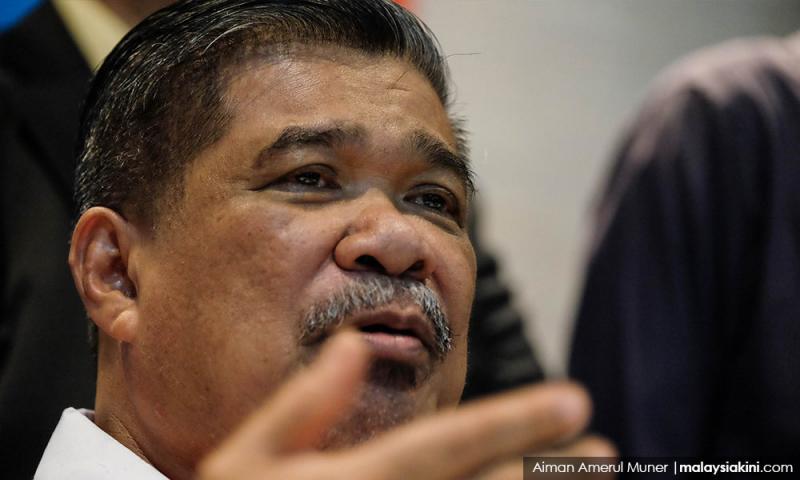COMMENT | Congratulations to our cook at Kamunting Detention Camp during Ops Lallang, Mohammad Sabu (above) for being appointed our new defence minister. He has been quoted as saying that his first task as defence minister is to investigate an alleged military land privatisation deal made to a company owned by three individuals.
All well and good, but surely this is but one small part of the overall big defence picture that needs reviewing. There are a number of systemic aspects of that big picture that demand his attention. Certainly, Malaysia has a litany of scandals surrounding arms purchase commissions, especially the Arms for Aid scandal during Dr Mahathir Mohamad’s term in the nineties and the Scorpene scandal under Najib Abdul Razak’s watch.
Not only do the rakyat deserve an assurance that such scandals will never happen again, they need the defence minister to look afresh at Malaysia’s defence priorities.
No doubt the new defence minister’s first suitors will be the French government trying to sell him their 18 multi-billion Rafale fighter jets in a deal worth RM10 billion. Remember the French have already succeeded in selling two Scorpene submarines to Malaysia for more than RM7 billion, the single largest defence purchase by Malaysia to date.
The French are desperate to sell their arms because sixty percent of their exports are made up of arms. They obviously have not heeded the wise words of their littérateur Albert Camus who said, “Peace is the only battle worth waging.”
Our new defence minister will no doubt also soon be feted by British Aerospace who are competing for a slice of Malaysia’s defence pie. They are trying to flog their ‘Typhoon’ fighter jets in the RM10 billion deal.
Can Malaysia afford such fighter jets? The key question the new defence minister needs to ask is whether Malaysia actually needs any of these fabulous toys, considering the cost of fighter jets is spiralling way out of control and such “toys” are so quickly obsolete.
One of the rare moments we got to use our F18 fighter bombers and Hawk 208 fighter jets was against those invaders described by then defence minister Hishammudin Hussein as a “rag-tag army” at Lahad Datu a few years ago. Wouldn’t armoured cars and tanks and mortars have sufficed in that four square kilometer area of land against that motley crew?

Malaysian taxpayers need to be wary of this latest and record-breaking arms deal. Let us not forget the scandal over alleged commissions in that Scorpene submarines deal which are linked to the grisly murder of the Mongolian lass Altantuya Shaariibuu.
Besides having to find the replacement revenue for scrapping the GST, Pakatan Harapan made a big deal out of the ballooning national debt during the recent election campaign. Malaysia's external debt rose to RM883.4bil (US$215.5bil) or 65.3% of GDP as at end-December 2017, according to Bank Negara Malaysia.
This raises a red flag about whether we can afford such levels of defence spending at all and importantly, is what we are spending allocated wisely on arms priorities considering our debt situation?
Let's have an audit report
Malaysian taxpayers deserve answers to these key questions: Are multi-role combat aircraft our priority at the moment considering the latest state-of-the-art (US) F35s cost at least half a billion ringgit a piece? And if the most advanced US-made fighter jet, the F35 ‘Raptors’ cost more than RM500 million, should these French Rafaels similarly cost that much?
Malaysians need to be reminded that with RM10 billion, we can build at least 10, 000 rural schools or 1,000 district hospitals. Note that we only have just over 1000 Chinese primary schools and just over 500 Tamil schools in the whole country today.
The outgoing defence minister said it was planning to replace the Royal Malaysian Air Force’s (RMAF) squadron of Russian MiG-29 combat planes, nearly half of which are grounded. The new defence minister must investigate why nearly half these MiGs are grounded and call for a report on the relative performances of our MiGs, Sukhois, Hawks and F18s purchased in recent years.
Can we also have an audit report on the compatibility of our bizarrely diverse Russian, British, US (and now French?) fighter jets and especially the compatibility of their avionic systems? What lessons do our past purchase choices hold for our future fighter jet procurements? These are the questions the new defence minister must pose to our air force chiefs. They are important considerations for forging our defence policy.
The broader question the new defence Minister must pose to our armed forces chiefs is: who are Malaysia’s enemies and what appropriate weaponry do we need? The new members of Parliament must ask our new government: what is Malaysia’s national defence policy? This question has never been properly debated in Parliament. They should demand that this question be debated in Parliament long before they are given a bill to buy 18 fighter jets that cost RM10 billion.
During the Lahad Datu incident, it was clear our two submarines built by the French DCNS sitting pretty at Sepanggar Bay and our six New Generation Patrol Vessels (costing RM9 billion) were not the most suitable vessels in the circumstances. It brings to mind the question of the appropriate vessels that should be the priority for our navy.

As part of the RM5 billion arms deal signed between Mahathir and Margaret Thatcher in 1989, we procured two corvettes built by the Yarrow shipbuilders costing RM2.2 billion. At the time, the Royal Malaysian Navy said they required sixteen offshore patrol vessels but due to financial constraints, the Royal Malaysian Navy could only afford four or five of these locally-built OPVs. Mindef had budgeted RM85 million per OPV. Now, in the light of the latest incident at Lahad Datu, Malaysians will be in a better position to see more appropriate vessels that would be more suitable to secure the Sabah coastline.
Before the Lahad Datu incident, our main “enemies” testing the capacity of our armed forces were the pirates in the South China Sea and the Straits of Malacca. There were no bigger “enemies” than those seafaring marauders. Are state-of-the-art fighter jets and submarines the appropriate weaponry against pirates? These would likewise be inappropriate if “international terrorists” and suicide bombers choose to target Malaysia.
Rising tensions in the South China Sea
We are now told that Malaysia wants to revamp of its aging naval fleet in the face of threats from rising tensions in the South China Sea. Malaysia's navy aims to replace all 50 vessels in its aging fleet and this will be led by the procurement of four littoral mission ships (LMS) built in collaboration with China. The deal is worth more than RM1 billion.
One would imagine that by its reference to “rising tensions”, the Malaysian government is referring to China’s claims to the disputed islands in the South China Sea. So, if China is seen as a possible “enemy”, should China have a hand in the building of these littoral mission ships? It seems a very strange logic in justifying the purchase of these four warships.
Or are the Asean countries also seen as possible “enemies” since there is an unspoken arms race among the Asean countries through the years which merely exhausts the hard-earned resources of our peoples. Total defence spending of Association of South-east Asian Nations (Asean) states doubled over the last 15 years in absolute terms, with countries like Indonesia and Thailand witnessing military expenditure growth rates of 10 per cent on a year-by-year basis.

The Malaysian Navy is also reported to be in the final stages of negotiations with French shipbuilder DCNS to build the larger littoral combat ships (LCS), three new multi-role support ships (MRSS) and two more submarines. Knowing the bill for the two Scorpene submarines was more than RM7 billion, Malaysian taxpayers should be prepared for the worst.
Arms control in Asean
So, exactly how are decisions made in the ministry of defence to purchase the submarines, the corvettes, the frigates instead of more patrol boats to guard our coastlines? Members of Parliament would do well to demand an answer. Ultimately, the need to cut down our arms budget must be discussed and agreed among the Asean countries.
What does Asean’s aim to create a zone of peace, freedom and neutrality mean? It is meaningless unless the countries in the Southeast Asian association prove their sincerity by implementing arms control so that badly needed resources can be diverted to improving the standard of living of Asean peoples.
Regional disputes can be resolved through adopting co-operative management to allow safe fishing, while oil and gas exploration beyond 200 nautical miles from mainland coasts can be regulated by the International Seabed Authority, as provided by the Law of the Sea Convention. The resolution of the Pedra Bianca dispute between Malaysia and Singapore through international intervention showed that peaceful negotiations are always possible and that military means are not an option.
It has been reported that some macho men have welcomed Mat Sabu as the new defence minister because of his “Rambo” image. The Mat Sabu I know is actually a person who has a strong persona yet gentle in many ways. I urge him not to fall for the “Rambo” model but to promote a culture of peace as the defence policy of our new Malaysia.
To uphold Malaysia’s non-alignment policy, we need to positively resist alignment with any superpower and display genuine independence in foreign and military policy. Asean’s Zopfaan policy should emulate New Zealand’s example by denying all port facilities to any ship carrying nuclear weapons. Malaysians must take charge of creating a culture of peace in the region. There is no justification for war.
A culture of peace in Malaysian society is a vision that is only attainable in a society that respects human dignity, social justice, democracy and human rights. It is such an environment that can settle conflict and differences through dialogue and democracy and not through threats and repression. To achieve a culture of peace, our new defence minister could heed these wise words by Chinese philosopher Mozi, circa 470-391 BC:
“To kill one man is to be guilty of a capital crime, to kill ten men is to increase the guilt ten-fold. This the rulers of the earth all recognise, and yet when it comes to the greatest crime – the waging of war on another state – they praise it! So those who recognise a small crime as such, but do not recognize the wickedness of the greatest crime of all – the waging of war on another state – cannot distinguish right and wrong. So as to right and wrong, the rulers of the world are in confusion.”
KUA KIA SOONG is the advisor to human rights organisation Suaram.
The views expressed here are those of the author/contributor and do not necessarily represent the views of Malaysiakini.






